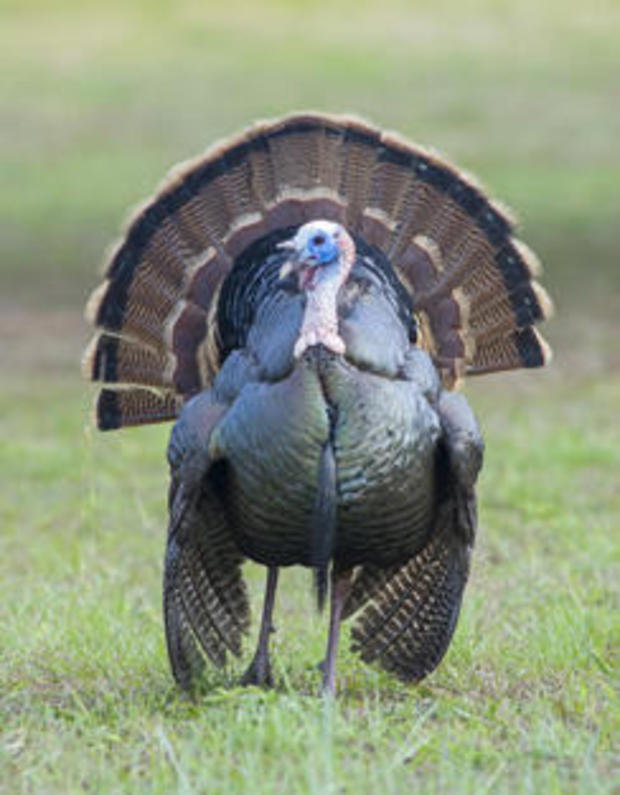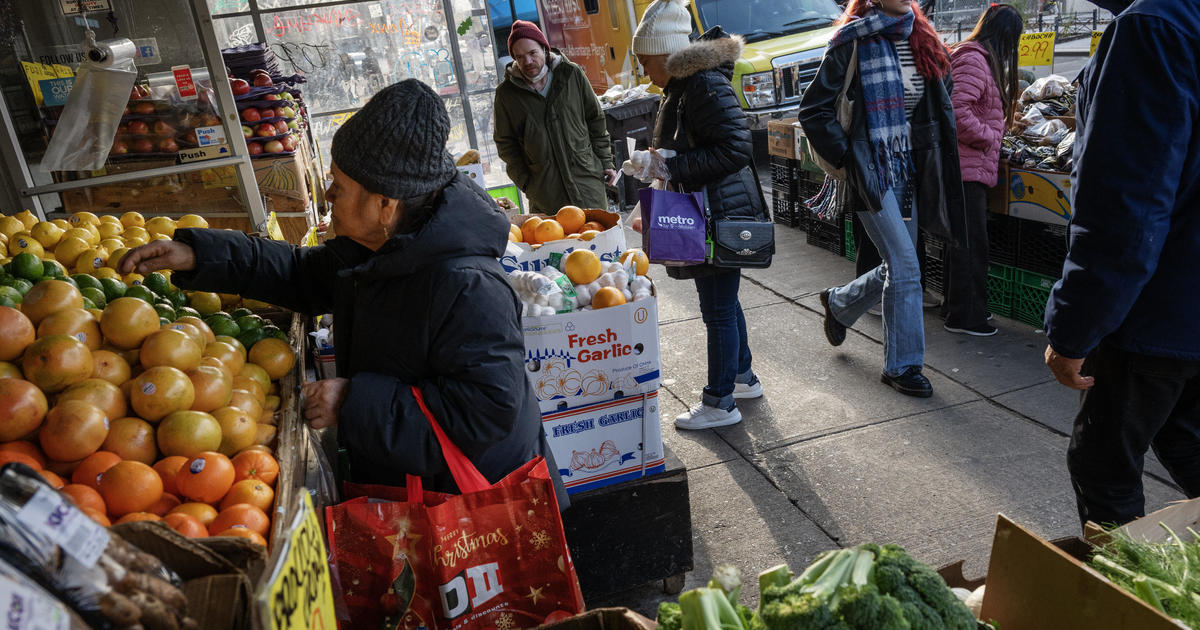Nature up close: Turkeys
By “Sunday Morning” contributing videographer Judy Lehmberg.
Have you ever thought about where your Thanksgiving turkey came from? Not from the grocery store -- I mean, where did all domestic turkeys originally come from?
We all know the story that a turkey was a prominent part of the first Thanksgiving meal in the Plymouth Colony as the Pilgrims gave thanks for their first successful corn crop in 1621. It is not known if they really served turkey that day. We do know deer and fowl were on the menu, but we don’t conclusively know whether the fowl included turkey.
A Patuxet Indian named Tisquantum (often known as Squanto) showed the newly-arrived Europeans how to grow corn. By 1623 the Governor of Plymouth Colony, William Bradford, organized a Thanksgiving feast and invited the local Wampanoag tribe members. Deer and fowl were served that day, and perhaps the menu included “turkies”
Although wild turkeys were present in the New World when Europeans first arrived, they weren’t aware of that and brought their own domestic turkeys. Or at least that is what they thought. In reality they were actually returning those turkeys to their original home, North America.
The Spanish explorers who came to the New World had taken turkeys back to Spain in the 1500s. Those turkeys had already been domesticated by the pre-Aztecs in Mexico around 800 B.C. Later, ships sailing from the Mediterranean stopped in Spain, picked up some of the domesticated turkeys, and took them to England. The English referred to them as “turkeys” because they believed they were originally from the country of Turkey.
Turkeys were actually domesticated twice in the New World -- once in pre-Aztec Mexico (about 800 B.C.), and again somewhere in the Southwest (between 200 B.C. and 500 A.D.). We know that because the DNA from turkey bones found in both pre-Aztec and Anasazi ruins has been analyzed and compared to the six known subspecies of turkeys in North America.
The six subspecies are:
- The Eastern wild turkey, whose range covers the entire eastern half of the United States. They are the largest and most numerous of the subspecies.
- The Rio Grande turkey, which ranges from Texas and Oklahoma to New Mexico, Colorado and Utah. It has longer legs adapted for living in prairies.
- Gould’s wild turkey, found in central and northwest Mexico, Arizona and New Mexico.
- Southern Mexico wild turkey, whose original range was believed to be from central to southern Mexico. It is one of the smaller of the subspecies, and today the rarest; it is considered endangered by some biologists and extinct by others.
- Merriam’s wild turkey, which ranges through the Rocky Mountains, the prairies of Montana, South Dakota and Wyoming, and higher elevations in New Mexico, Arizona and Utah.
- The Osceola or Florida wild turkey, who (as its name implies) lives in Florida.
The Southern Mexico is the subspecies that domesticated by the pre-Aztecs and then taken by the Spanish back to Spain, and eventually spread to other areas of Europe and England, and later brought back to North America by the Pilgrims.
The DNA from the domesticated turkeys owned by the Anasazi shows they have a surprising past. They are a mixture of both Eastern and Rio Grande subspecies with only a small percentage of the local, Merriam’s and Gould’s, subspecies. Perhaps the Anasazi traded for these birds with other people from east of the Four Corner’s areas. We know the turkey was highly prized by the Anasazi, as they carved petroglyphs (left) which included turkeys. They first kept turkeys not only for food but also for their feathers, which were used both for ceremonial purposes and for more practical items, such as weaving them in to warm blankets.
So back to the original question of where your Thanksgiving turkey came from. It was first domesticated by the pre-Aztecs, transported to Europe by the Spaniards, spread to other parts of Europe and England, and then finally brought back to its original home in North America. I’m not sure the pre-Aztecs would even recognize the turkeys we have continued to genetically alter by increasing their breast size and somehow changing what was dark breast muscle to white meat. Their breasts are now so heavy they can’t even reproduce on their own; females must be artificially inseminated. They have indeed changed significantly since that first Thanksgiving.
Turkeys join the list of useful organisms Europeans brought back from the New World, a list that includes tomatoes, peppers, corn and potatoes. All of these have had a tremendous effect on food production worldwide, as they continued to be further domesticated to our needs. The white Thanksgiving turkey may differ genetically from the Southern Mexican subspecies from which it came, but what has not changed from the Pilgrims’ first Thanksgiving is the thanks we give for this traditional holiday food.
Judy Lehmberg is a former college biology teacher who now shoots nature videos.
For more info:
- Judy Lehmberg (Official site)
- Judy Lehmberg’s YouTube Channel
To watch extended “Sunday Morning” Nature videos click here!





